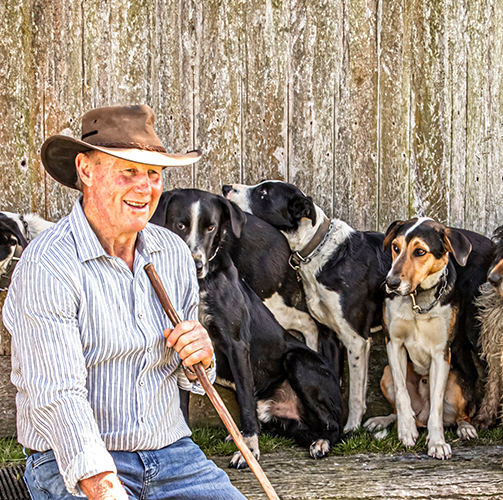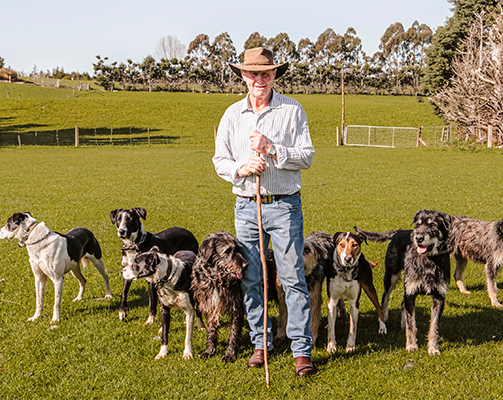A Lifetime Dedicated to Unleashing Excellence
Words by Ayla Miller
Renowned dog trainer and trialist Lloyd Smith has spent more than 50 years with a whistle in hand, winning sheep dog trials across New Zealand. He shares his proven methods to unleashing a canine companion's potential as a farm dog.
Lloyd Smith’s association with working dogs can be traced back to 1969 when he left South Otago High School and began working on Hazeldale, situated up the Clinton Gorge in Southland.
Initially planning to pursue studies at Lincoln College, he soon discovered a passion for stock work and gradually assembled a “motley looking bunch” of dogs, but a team regardless of appearances.
“Looking back, they weren't really of any great consequence and that was probably more my fault than theirs. But they got me started,” Lloyd recalls.
Moving on from the Clinton Gorge, he began mustering at Nokomai Station south of Lake Wakatipu, first under the guidance of head shepherd Bob McKay, then later under Larry Murdoch. It was during his time in the hill country alongside these seasoned stockmen, including the likes of Ted
Phipps and Sam Boynton, that he absorbed the principles of effective stockmanship and learnt the skills to train a dog in accordance with those principles. “That's where I sort of got the bug,” he says.
During those early years, he exclusively trained his dogs using livestock. However, later Lloyd modified his approach, dedicating a significant portion of basic training away from sheep, where only he and the dog are present. This allows him to focus on establishing the dog's command without the distractions of sheep, reducing it to a simple matter of obedience between the two of them.
In 1982 Lloyd attended his first sheep dog trial championships and since then has been placed 61 times, including winning five New Zealand titles and five South and North Island titles. He has also been selected twice for the New Zealand Test Team competing against Australia. All of these results were with dogs he trained himself.






